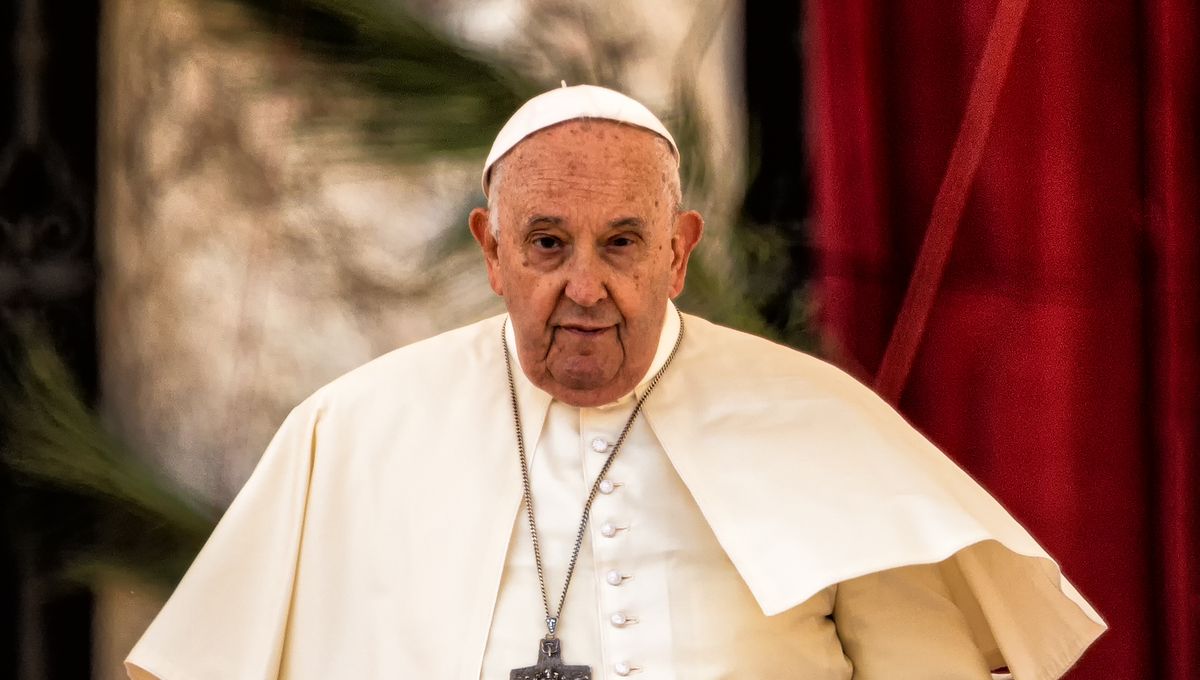
After Pope Francis was hospitalized on February 14 to receive treatment for bronchitis, the Vatican has now announced that the head of the Catholic Church has been diagnosed with double pneumonia.
ADVERTISEMENT GO AD FREE
“A follow-up chest CT scan, to which the Holy Father was subjected this afternoon – prescribed by the Vatican medical team and the medical staff of the “A. Gemelli” Polyclinic Foundation – revealed the onset of bilateral pneumonia, requiring additional pharmacological therapy,” the Holy See Press Office said in a statement made on February 18.
“Nevertheless, Pope Francis remains in good spirits.”
What is double pneumonia?
Pneumonia is an infection of the lungs that can be caused most commonly by bacteria or viruses, such as Streptococcus pneumoniae and influenza, or more rarely, fungi or parasites. The Vatican has said that Pope Francis has a “polymicrobial infection”, which means that there are multiple microbial organisms involved.
Double pneumonia is simply an informal term for bilateral pneumonia, which means that someone has a pneumonia infection in both of their lungs.
The infection causes inflammation and swelling of the small air sacs in the lungs, while also filling them with fluid or pus. As a result, it can make it more difficult for oxygen to move out of the lungs and into the bloodstream, and lead to symptoms such as shortness of breath and rapid breathing.
Other signs of pneumonia can include fever, a cough that may come with green, yellow, or bloody mucus, fatigue, chest pain, loss of appetite, and confusion.
What puts someone at risk of getting pneumonia?
While anyone can get pneumonia – some estimates suggest over 900,000 people in the US develop it each year – there are some medical and environmental factors that make the infection more likely to happen, and more likely to be severe.
Existing medical conditions can play a role, such as lung diseases like cystic fibrosis or chronic obstructive pulmonary disorder (COPD), as well as heart disease, a weakened immune system, and conditions that make it difficult to swallow.
Pope Francis, for example, is reported to have had part of one of his lungs removed as a young adult, following a severe respiratory infection. He was also hospitalized with bronchitis in 2023.
Being over 65 or under 2 years old are risk factors too, in addition to smoking cigarettes, drug and alcohol abuse, and exposure to environmental pollutants.
How is double pneumonia treated?
How pneumonia – including bilateral – is treated depends on lots of different things, but it’s primarily based on what caused the infection. If someone has bacterial pneumonia, for example, patients will usually be given antibiotics, which may be specifically targeted or broad spectrum depending on whether or not there are multiple types of bacteria involved.
In the Pope’s case, the fact that it’s a polymicrobial infection “makes the therapeutic treatment more complex,” said the statement from the Vatican. If there are viruses involved in the infection, for example, they won’t respond to antibiotics.
Symptoms like fever and pain can be treated with medicines like ibuprofen, while humidifiers and steamy showers might be recommended to help with coughing and clearing phlegm. In more severe cases of pneumonia, some patients might also require oxygen therapy or need to receive antibiotics intravenously.
With treatment, most people with pneumonia who are otherwise healthy will start to feel better within around one to two days for bacterial pneumonia, and after a few days for viral pneumonia, though some people might find symptoms like coughing and tiredness stick around for a few weeks.
ADVERTISEMENT GO AD FREE
However, age, the cause and severity of the infection, and health status can all play a role in how quickly someone recovers from pneumonia. Given his age, health history, and the nature of his infection, the Pope is expected to remain in hospital for a while, though it’s been reported that he’s showing some “slight improvement”.
All “explainer” articles are confirmed by fact checkers to be correct at time of publishing. Text, images, and links may be edited, removed, or added to at a later date to keep information current.
The content of this article is not intended to be a substitute for professional medical advice, diagnosis, or treatment. Always seek the advice of qualified health providers with questions you may have regarding medical conditions.
Source Link: The Pope Has Double Pneumonia – Here’s What That Means